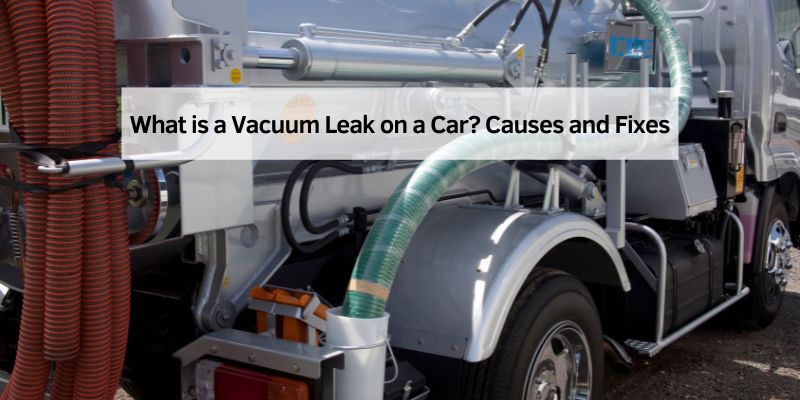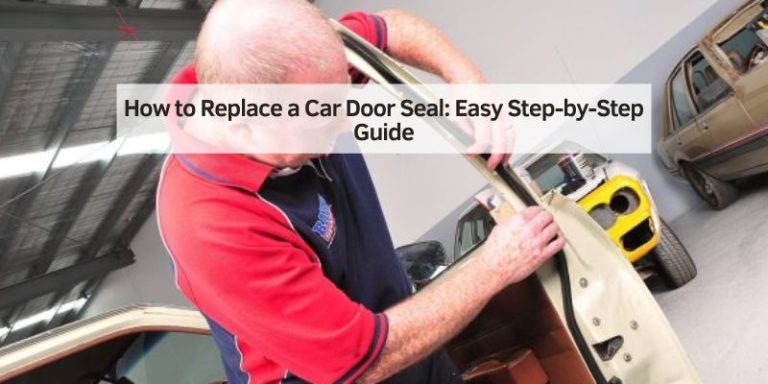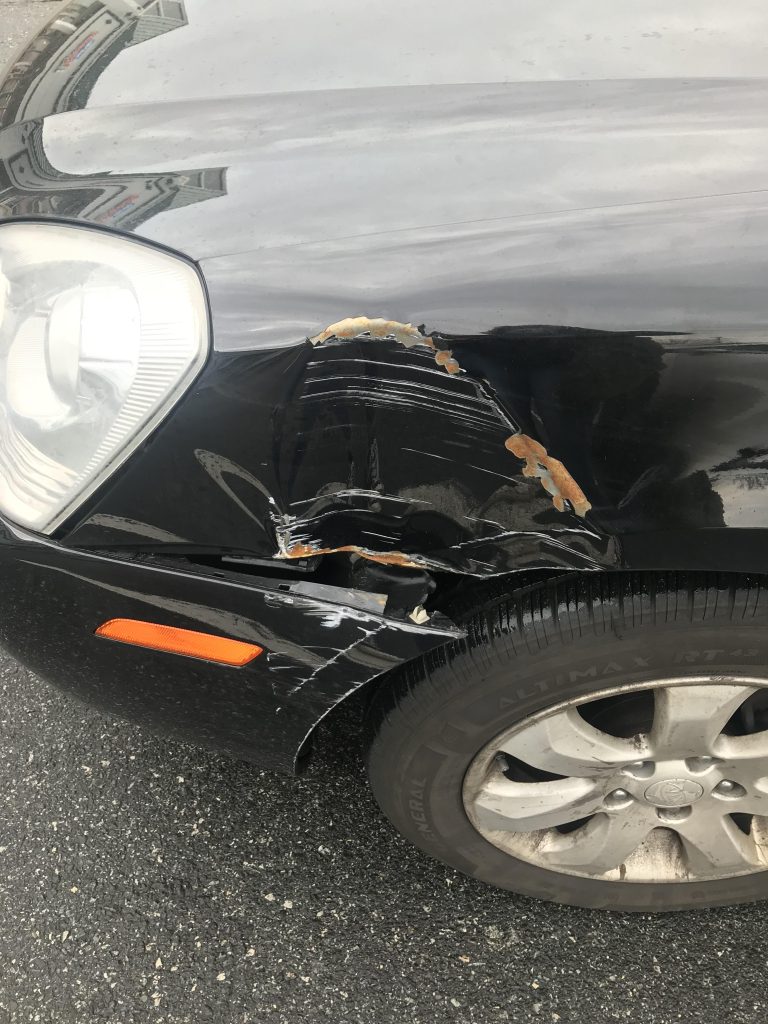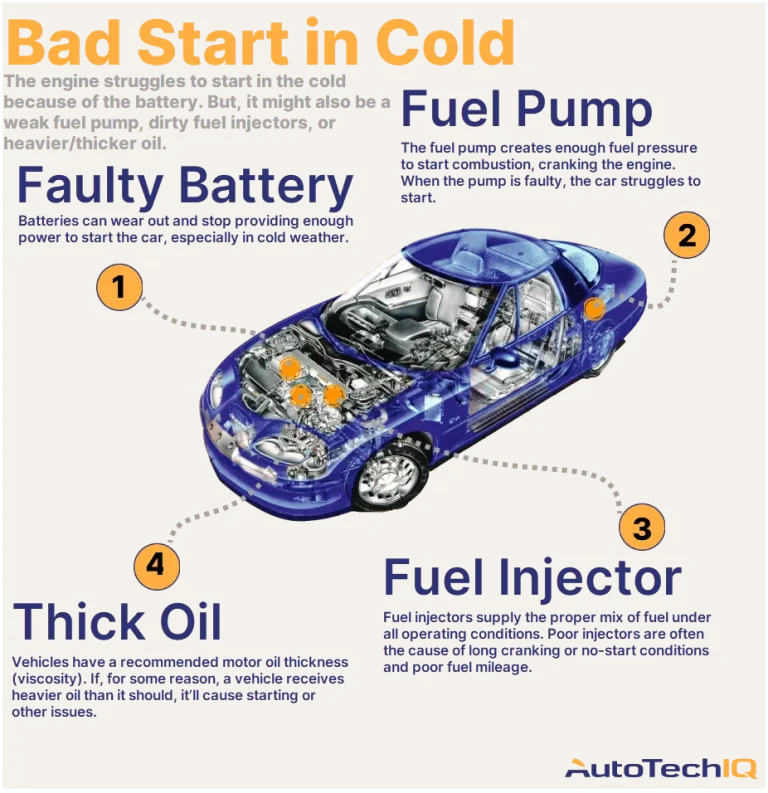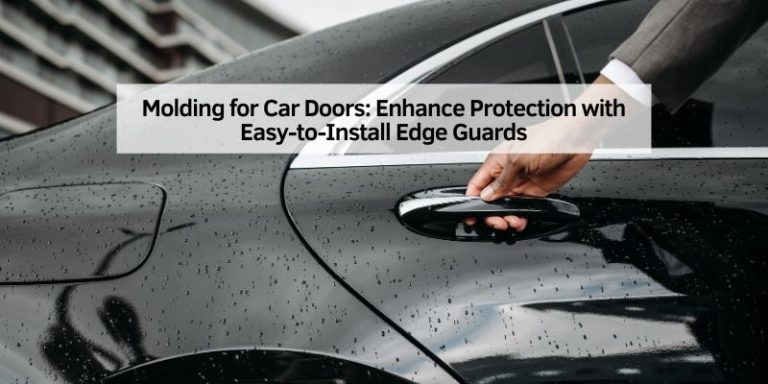What is a Vacuum Leak on a Car? Causes and Fixes
A vacuum leak on a car happens when air enters the engine. This disrupts the air-fuel mixture.
Understanding a vacuum leak is crucial for car maintenance. It can cause poor engine performance, rough idling, or even stalling. Car engines rely on a specific air-fuel ratio. A vacuum leak introduces extra air, making the engine run lean. This can lead to various issues, from minor annoyances to serious engine damage.
In this post, we will explore what a vacuum leak is, how to spot it, and why it matters. Knowing about vacuum leaks can save you time and money on car repairs. Plus, it helps keep your car running smoothly. So, let’s dive into the details of vacuum leaks on cars.
Introduction To Vacuum Leaks
A vacuum leak happens when air escapes in a car. It occurs in parts like hoses or seals. This leak can cause the car to run poorly. Engines need the right amount of air to work well. Too much air can confuse the engine system.
Vacuum leaks affect how a car performs. They can lead to poor fuel efficiency. The car might use more gas than needed. The engine might idle roughly. Sometimes, the car stalls. These problems can make driving unsafe. Fixing leaks is crucial for a smooth ride.
Signs Of A Vacuum Leak
A car with a vacuum leak may have strange symptoms. You might hear a hissing sound from the engine. This is not normal. The car might idle roughly. It can even stall at stops. Poor acceleration is another sign. The car feels slow when you press the pedal.
Fuel economy can drop too. You will need more fuel. More trips to the gas station. Sometimes, the check engine light turns on. This is a warning. A vacuum leak affects engine performance. It makes the car run poorly. Pay attention to these signs.
Vacuum leaks can hurt engine efficiency. The engine works harder. It uses more fuel. This is not good. The car may feel weak. It might struggle on hills. Power loss is common. Engines need air to work well. A leak steals air from the engine.
Engines need the right air and fuel mix. A leak changes this mix. It makes the engine less efficient. The car might misfire. Misfiring is bad for the engine. It can cause damage. Fix leaks quickly to keep your car healthy.
Common Causes Of Vacuum Leaks
Rubber components wear out with time. They become brittle and weak. These parts include gaskets, seals, and other rubber elements in the car. With age, they can crack or break. This creates gaps where air can escape or enter. Such leaks affect the car’s performance. A car might run rough or stall. Regular checks help catch these issues early. Replace old rubber parts to avoid problems.
Hoses and tubes carry air and fluids in a car. If they crack, air escapes. This is a vacuum leak. Cracks form from heat, pressure, or time. Damaged hoses affect engine performance. The engine may idle poorly or lose power. Inspect hoses regularly for cracks or wear. Replace any damaged ones quickly. Proper maintenance keeps the car running well.
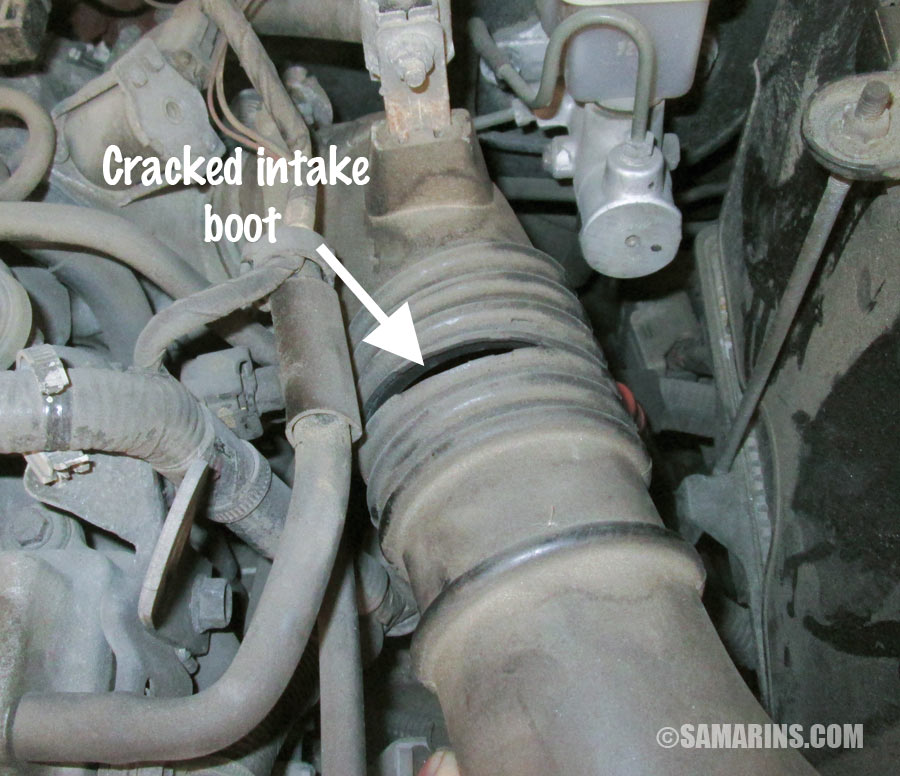
Credit: www.samarins.com
Diagnosing Vacuum Leaks
Look for cracked or loose hoses. Check connections carefully. Broken hoses cause leaks. Inspect hose clamps for tightness. Worn clamps might need replacing. Use a flashlight to see hidden spots. Check around the engine for hissing sounds. Hissing can mean a leak. Feel hoses for soft areas. Soft hoses might be damaged. Check for oil or dirt marks. These might show a leak area. Use your nose. Smell for fuel odors. Smell can help find a leak.
Smoke machines find leaks fast. They push smoke through the system. Watch for smoke escaping. Escaping smoke means a leak. Use a vacuum gauge. It checks pressure in hoses. Low pressure might show a leak. Scan tools can help too. They check engine codes. Codes might point to a vacuum leak. Use water spray around hoses. Bubbles show leak spots. Simple but effective. Keep tools handy for future checks.
Effects Of Vacuum Leaks
A vacuum leak can make your car use more fuel. The engine works harder to run. This uses more gas. You will need to fill up the tank more often. Spending more money on gas can be frustrating. It is important to fix the leak soon.
Vacuum leaks also affect your car’s emissions. Your car might release more pollution into the air. This is not good for the environment. It can cause your car to fail emission tests. These tests are important for keeping the air clean. Fixing leaks helps reduce pollution.

Credit: www.torque.com.sg
Preventing Vacuum Leaks
A vacuum leak in a car occurs when unwanted air enters the engine, disrupting its balance. This can cause rough idling, stalling, or decreased fuel efficiency. Regular inspection of hoses and seals helps in preventing these leaks, ensuring smooth engine performance and reliability.
Regular Maintenance Practices
Cars need care to run well. Check hoses often for cracks or wear. Listen for hissing sounds while the engine runs. This can mean a leak. Use a flashlight to look for damage. Keep the engine clean. Dirt can hide problems. Inspect connections where hoses meet parts. Loose parts may cause leaks. Change worn parts quickly. Old hoses can break easily.
Choosing Quality Replacement Parts
Good parts help prevent leaks. Buy parts from trusted stores. Look for items made by known brands. Check the packaging for quality marks. Avoid cheap parts. They may not last long. Ask the seller about warranties. Choose hoses that fit well. Verify size and shape before buying. Compare prices, but focus on quality.
Repairing Vacuum Leaks
A vacuum leak in a car disrupts the engine’s air-fuel mixture, affecting performance. It occurs when air enters the intake manifold through cracks or faulty seals. Identifying and fixing these leaks can restore engine efficiency and prevent further damage.
DIY Repair Techniques
Finding a vacuum leak can be tricky. Use a spray bottle with water. Spray around hoses and connections. Listen for changes in engine sound. This may help locate the leak. Repairing leaks often involves replacing hoses. Check all hoses for cracks or holes. Use a hose clamp to secure loose hoses. Tighten any loose connections. This can stop air from escaping. Make sure to wear gloves. Protect your hands from sharp edges. Have patience and check carefully. This will save you time and effort.
Professional Repair Options
Sometimes you need a mechanic. They have special tools to find leaks. A smoke machine can locate leaks fast. Mechanics replace faulty parts quickly. They also ensure all connections are tight. Mechanics have experience and knowledge. They fix complex issues safely. Professionals may cost more. But they offer warranty on repairs. This gives peace of mind. Trust experts for big problems. They can help keep your car running well.

Credit: www.familyhandyman.com
Frequently Asked Questions
What Are The Symptoms Of A Vacuum Leak In A Car?
A vacuum leak in a car can cause rough idling, engine misfires, poor fuel efficiency, and unusual hissing sounds. The check engine light might illuminate, and acceleration may feel sluggish. These symptoms indicate a disruption in the air-fuel mixture, affecting engine performance.
Can You Drive A Car With A Vacuum Leak?
Driving with a vacuum leak is possible but not recommended. It can cause poor performance and fuel efficiency issues. This may lead to rough idling, stalling, or engine damage over time. Addressing the leak promptly ensures safety and prevents costly repairs.
How Do You Fix A Vacuum Leak In A Car?
Locate the vacuum leak using a smoke machine or soapy water. Repair damaged hoses or connections by replacing them. Ensure all clamps are tight and secure. Check the intake manifold gasket for damage and replace if necessary. Test the car to ensure the leak is fixed.
What Happens If You Ignore A Vacuum Leak?
Ignoring a vacuum leak can decrease engine performance and fuel efficiency. It may lead to rough idling and stalling. Over time, it can cause engine damage. Addressing vacuum leaks promptly ensures optimal vehicle performance and prevents costly repairs. Regular maintenance is essential to avoid potential issues caused by vacuum leaks.
Conclusion
Understanding vacuum leaks helps maintain your car’s health. Identifying leaks early prevents engine issues. It saves you money on repairs. Listen for hissing sounds. Check for rough idling or poor fuel economy. These are signs of a vacuum leak. Regular maintenance is key.
Inspect hoses and connections often. Keep your engine running smoothly. A simple fix can make a big difference. Don’t ignore warning signs. Act quickly to avoid larger problems. Your car will thank you with better performance. Stay informed. Keep your car reliable and efficient.
Maintain its value over time.

